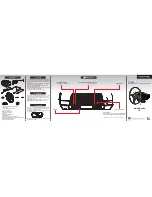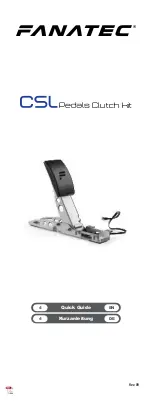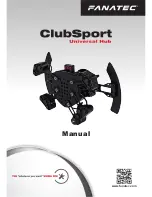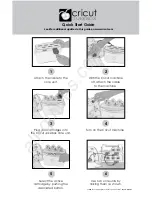
22
Enter R.A. - Dec:
You can also store a specific set of coordinates for an object just by entering the R.A. and
declination for that object. Scroll to the "
Enter RA-DEC "
command and press ENTER.
The display will then ask you to enter first the R.A. and then the declination of the desired
object.
GoTo Object:
To go to any of the user defined objects stored in the database, scroll down to either
GoTo
Sky Obj
or
Goto Land Obj
and enter the number of the object you wish to select and
press ENTER. CPC will automatically retrieve and display the coordinates before slewing to
the object.
To replace the contents of any of the user defined objects, simply save a new object using one of the existing identification
numbers; CPC will replace the previous user defined object with the current one.
Get RA/DEC
- Displays the right ascension and declination for the current position of the telescope.
Goto R.A/ Dec
- Allows you to input a specific R.A. and declination and slew to it.
Identify
Identify Mode
will search any of the CPC database catalogs or lists and display the name and offset distances to the nearest
matching objects. This feature can serve two purposes. First, it can be used to identify an unknown object in the field of
view of your eyepiece. Additionally,
Identify Mode
can be used to find other celestial objects that are close to the objects
you are currently observing. For example, if your telescope is pointed at the brightest star in the constellation Lyra,
choosing
Identify
and then searching the
Named Star
catalog will no doubt return the star Vega as the star you are observing.
However, by selecting
Identify
and searching by the
Named Object
or
Messier
catalogs, the hand control will let you know
that the Ring Nebula (M57) is approximately 6° from your current position. Searching the Double Star catalog will reveal
that Epsilon Lyrae is only 1° away from Vega. To use the
Identify
feature:
•
Press the Menu button and select the Identify option.
•
Use the Up/Down scroll keys to select the catalog that you would like to search.
•
Press ENTER to begin the search.
Note: Some of the databases contain thousands of objects, and can therefore take a minute or two to return the closest object.
Precise GoTo
The CPC has a precise goto function that can assist in finding extremely faint objects and centering objects closer to the
center of the field of view for astrophotography and CCD imaging. Precise Goto automatically searches out the closest
bright star to the desired object and asks the user to carefully center it in the eyepiece. The hand control then calculates the
small difference between its goto position and its centered position. Using this offset, the telescope will then slew to the
desired object with enhanced accuracy. To use Precise Goto:
1.
Press the MENU button and use the Up/Down keys to select
Precise Goto
.
•
Choose
Database
to select the object that you want to observe from any of the database catalogs listed
•
Choose
RA/DEC
to enter a set of celestial coordinates that you wish to slew to.
2.
Once the desired object is selected, the hand control will search out and display the closest bright star to your
desired object. Press ENTER to slew to the bright alignment star.
3.
Use the direction buttons to carefully center the alignment star in the eyepiece.
Press ENTER to slew to the desired object.
To store a set of coordinates (R.A./Dec) permanently into the CPC database, save it as a
User Defined Object
as described
above.
Helpful
Hint
Summary of Contents for CPC 1100
Page 1: ...I IN NS ST TR RU UC CT TI IO ON N M MA AN NU UA AL L...
Page 58: ...58 APPENDIX E MAPS OF TIME ZONES...
Page 59: ...59...
Page 60: ...60...
Page 61: ...61...
Page 62: ...62...
Page 63: ...63...
Page 64: ...64...
Page 65: ...65...
















































